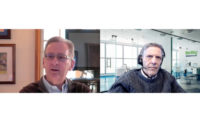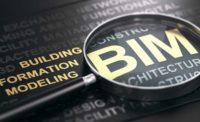A digital twin is a realistic and dynamic digital representation of a physical asset, process, or system in the built or natural environment.
As was the case with BIM nearly 20 years ago, digital twins are now reshaping the built world in terms of how infrastructure is designed, constructed, and operated. The industry has always faced challenges managing the volume and variety of data, as well as the varied ways it changes over time. This can be overwhelming for infrastructure professionals, whether their specialty is in project delivery or in operations. The advent of digital twins has helped the industry advance existing BIM-centric processes by improving data quality and accessibility. Importantly, infrastructure digital twins can be achieved “in place,” without having to disrupt or replace existing workflows or systems.

Regardless of infrastructure type, over time the digital twin of an asset or a project will become both its lifeblood and its central nervous system. That is—it’s going to be really valuable. We believe that to achieve sustainable infrastructure digital twins, it is imperative that you build your systems around open-source technology so the keys to your destiny remain in your hands. You are not going to “buy” your digital twins from a single vendor. Instead, you’re going to assemble, build, customize, and evolve your twin with pieces from many sources, the mix of which will change over time. Every vendor you deal with will tell you how “open” they are. Only those who are open sourced—meaning you can use your digital twin and the source code that powers it without a fee—really mean it.
Building the Foundation for iTwin.js
When we at Bentley Systems announced iTwin.js, we described that the foundation upon which it is built is the most open, productive, intuitive, and powerful development environment for capital projects and infrastructure assets, ever. The iTwin.js library is a comprehensive collection of JavaScript packages that build on the most open, popular, and flexible standards for modern cloud and web development. Though it can be used from any programming language, it is written in TypeScript (my favorite programming environment ever, by far) and leverages open technologies including SQLite, Node.js, NPM, WebGL, Electron, Docker, Kubernetes, and of course HTML5 and CSS. The same codebase can produce cloud services and web, mobile, and desktop applications. The source code is hosted on GitHub and is distributed under the MIT license.
By leveraging these open technologies, we have created the Bentley iTwin platform that is relevant for many different use cases. Our platform handles some important and difficult tasks such as persistence, visualization, scalability, security, and interoperability. Of course, your digital twins will have different mixes of data sources and features depending on the type of asset. The goal of an open platform is to allow anyone working on one aspect to easily combine their efforts with people working on other aspects. That means the whole thing doesn’t need to be written all at once and from one vendor. An open platform helps us to combine everything we use with little effort. A good infrastructure digital twin platform should do the same.
By building your platform on open-source technology, you provide your users with the ability to change it. They can copy the program source and access their data without paying a license. An open-source strategy has worked extremely well in other industries, but it has yet to be fully adopted in engineering, BIM, or CAD. The reason is that there has not been a meaningful platform open enough to allow people to layer on it, and even enable competitors to create solutions that work together with it.
To create an infrastructure digital twin (we call it an “iTwin”), we fuse together many types of data sources. One source is what we call “digital context"—observations sampled or surveyed in the past. Another source is “real time” or current data, such as IoT sensors, control systems, ERP systems, and emergency response systems. The data source that makes infrastructure digital twins most challenging is engineering and/or BIM data, because they often represent some future state of the twin. The concept of “future state” is a challenging computer science problem because it is nonlinear (i.e. there can be multiple valid states extant simultaneously). That’s the main reason infrastructure digital twins have never existed heretofore. Obviously all three data sources, past, present, and future, change continuously but with different granularity.
Nonetheless, if you could fuse all those data types, it’s clear that infrastructure digital twins will provide the basis for new applications to improve asset performance, including sustainability, productivity, occupancy, energy, safety, and maintenance. The questions are then: “How do you structure the data?;” “What transaction model?;” “How to visualize past/current/future in a single window?;” and “How do you make the system secure?” The answers will vary for each data type. If every organization working on just one part of a digital would has to solve all those problems on their own, they’d never finish, and nothing would work together.
The answer, like all computer science problems, is to layer on top of a comprehensive but extensible platform that supplies implementation of the pieces. For that platform to be both technically and economically feasible, I argue that it must be an open-source project sponsored by a profit-motivated organization. I offer iTwin.js from Bentley as that platform. If you feel there’s some part of it that you would rather work differently, you can change either by forking our code, or, hopefully, by generating pull requests to our repositories on GitHub. That way the ecosystem strengthens itself.
Mott MacDonald, a global engineering, management, and development firm uses the iTwin platform to improve the accessibility and understanding of engineering data. Data from different sources can be connected in a single repository. It allows data previously locked in model files to be accessed in a database-like form. This is a major breakthrough that enables quick and easy access to finely granulated asset data. Using the iTwin.js, Mott MacDonald developers have been able to connect this data source to downstream tools to efficiently re-use and interrogate this data. The iTwin platform has empowered Mott MacDonald to maintain a software agnostic approach while gaining far greater insights from the data.
Empowering People to Do More
People use the Bentley iTwin platform to solve problems that have nothing to do with Bentley Systems. We believe that as our platform is leveraged by third parties in creative ways, then we will be relevant when they succeed. We are fostering an ecosystem of innovation that will grow around a common set of source codes and data types that can be defined with open-source tools that are built on open standards.
At Bentley Systems, we’re excited about that potential, but we don’t aspire to be “the infrastructure digital twin company,” since it’s clear there will be a need for many hundreds of such companies. Instead, we intend to be the “infrastructure digital twin platform company” working in an ecosystem of innovation along with partners leveraging that platform. We think this will create a world where infrastructure digital twins really can improve the quality of life for everyone on the planet.





Post a comment to this article
Report Abusive Comment